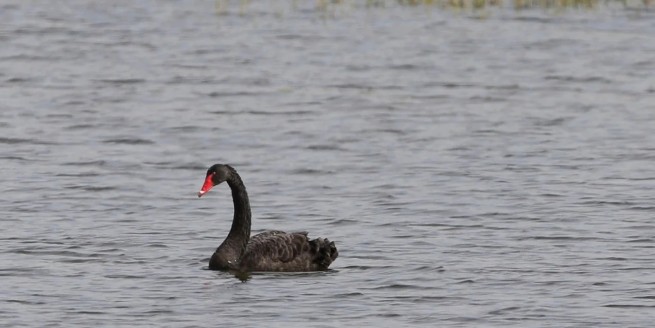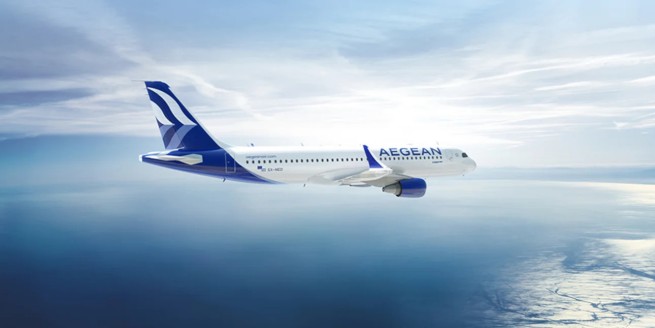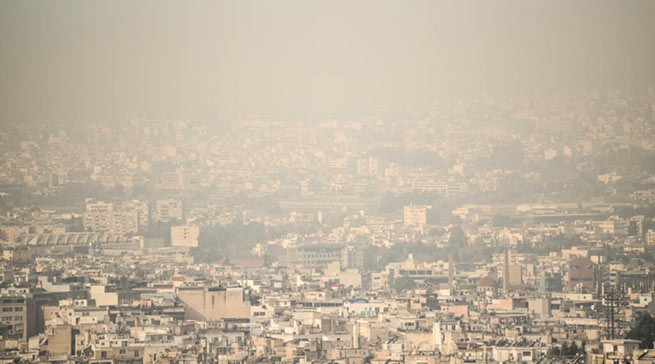The connection between the more frequent and prolonged occurrence of African dust with climate change and its combination with air pollution, as well as the deterioration of air quality in most countries, including Greece, and the reasons for this – these are the issues that are analyzed in the EPT program “With the First in Europe and the world.”
The program's guest was Demosthenes Sarigiannis, a chemical engineer, professor of environmental engineering at the Aristotle University of Thessaloniki and president/director of the National Research Foundation.
Recently The entire territory of Greece was covered by a toxic cloud, which combined Saharan dust with dangerous toxic substances and heavy metals from the polluted air of the areas through which it passed. The country's population inhaled this cocktail for about a week without much protection, as there was no full awareness and information about the dangers of this phenomenon, which is expected to repeat several more times this year.
African dust, combined with air pollutants from industry and automobiles, pollen and abnormally high temperatures, creates extreme conditions that affect everyone, especially vulnerable groups. For many years now, the World Health Organization has been publishing data on the cost of air pollution in terms of morbidity and mortality rates. Overall, air pollution kills more people than AIDS and malaria combined.
Experts estimate that air pollution kills about 7 million people a year, claiming a life every 5 seconds. Greece ranks 51st in the world rankingsfar from reaching the standard countries.
African dust and what it changed
Mr. Sarigiannis examines in the program how African dust in the atmosphere, a well-known and repeated phenomenon for centuries, has also been affected by climate change. He further explains that in addition to the particles that African dust contains, including the proportion of metals due to the composition of the soils from which it rises, the transfer of pathogenic microorganisms poses additional risks as the particles absorb pollutants from the areas through which they pass. It should be noted that African dust is windblown mineral dust from the Sahara Desert, which covers an area of nine million square kilometers. Thus, the Sahara is not only the most extensive desert in the world, but also the world's largest source of dust, carried by wind as a result of natural processes such as hurricanes. For these reasons, Professor Sarigiannis advises, on days when this phenomenon reaches its peak, to wear a mask outside and to use air disinfection devices indoors.
Contribution of transport, especially road
The program also examines whether the general debate about climate change has been overshadowed by concerns about specific air pollution problems in countries and cities and their direct health consequences.
Until recent years, in a typical city, industry was responsible for 50% of air pollution, transport for 35%, and households for 15%. However, since 1990, emissions from European transport have increased by more than a quarter. Recent analysis by Transport & Environment (T&E) shows that while emissions from other sources are already falling, emissions from transport continue to rise. And Europe needs to get serious about tackling transport emissions if it wants to reach CO2-free levels and beyond. According to modern climate research, the share of European transport could reach 44% of all emissions by 2030 if there are no changes not only in policies, but also in our habits.
Petrol and diesel vehicles are the main source of transport emissions, accounting for more than 40%, and dependence on cars has increased since the 1990s, thanks to the construction of more highways and the growth of vehicle fleets. International aviation – its emissions have doubled over the past 30 years – and shipping are increasingly contributing to the problem of air pollution. And amidst all these growing trends, a counter-trend has only recently emerged in auto emissions as the number of electric vehicles rises. However, Transport & Environment (T&E) analysis on the impact of climate regulations EU to combat transport emissions shows that in 2040 they will reduce transport emissions by only 25% compared to 1990 levels, and in 2050 by 62%.
The role of microparticles
Particulate matter is one of the major pollutants of our time and affects more of the population than any other pollutant. They are formed from various categories of sources and have a wide range of morphological, chemical and physical characteristics. As Mr Sarigiannis explains, they are classified according to their aerodynamic diameter into PM10 (aerodynamic diameter less than 10 microns) and PM2.5 (aerodynamic diameter less than 2.5 microns). PM10 particles can stick deep in the lungs, and even smaller and harmful PM2.5 particles can penetrate through them and enter the bloodstream. Chronic exposure to particle pollutants increases the risk of developing cardiovascular and respiratory diseases, as well as lung cancer.
Only 7 countries in the world breathe clean air
The results of a global study conducted by the Swiss organization IQAir, which collects data from 30,000 monitoring stations around the world on the quality of the air we breathe, are disappointing. Of the 134 countries in which the study was conducted, only seven met international air quality standards set by the World Health Organization. The vast majority of countries have rates well below baseline, meaning that air pollution is at levels causing serious health problems and ultimately 7 million deaths per year, as mentioned above.
The seven countries where air quality meets the standards are Australia, Estonia, Finland, Grenada, Mauritius, Iceland and New Zealand. The most polluted country is Pakistan, while India, Tajikistan and Burkina Faso round out the top four countries with the worst air pollution in the world. But there are changes: Canada, which has long been among the countries with the cleanest air, has now sharply worsened its quality due to large forest fires in recent years. And our country, ranked an unsatisfactory 51st in the world, must show immediate interest in this problem.
What can be done
How do we reconcile policies to combat the climate crisis with policies to ensure clean air where we live? Efforts are currently being made to combat air pollution through policy decisions at the central and regional levels. Organized international efforts began with the Kyoto Protocol (agreed in 1997) but remained incomplete. At the European Union level, already in the 1990s, catalytic converters were introduced in cars, which, when properly functioning and replaced, prevent the emission of unburnt gases and oxides produced by internal combustion engines, as well as ionization in chimneys of heavy industry, which reduces the emission of harmful gases by 90% .
However, Mr Sariyannis believes that all this is no longer enough and further modernized measures to combat local air pollution are needed in connection with climate change targets. As one solution to the problem, he proposes increasing the number of teleworks.







More Stories
Black swan in the Evros river delta
The weather will turn bad on Good Friday
Crete "shaking" – two earthquakes this morning